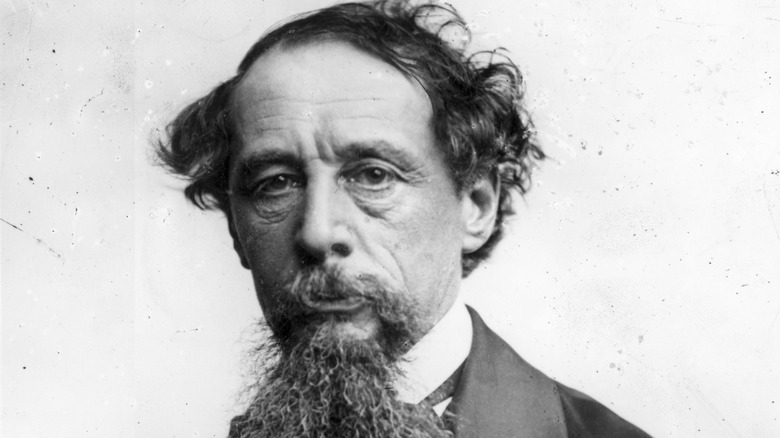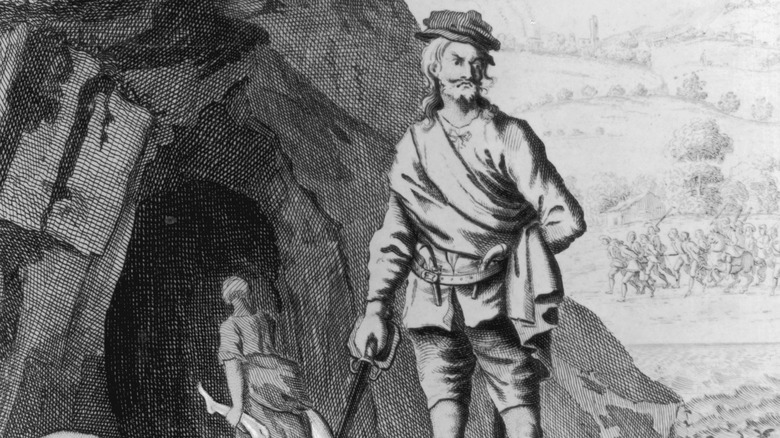'The Man-Eater Of Scotland' To A Butcher On Drury Lane: Possible Inspirations For Sweeney Todd
The Stephen Sondheim musical "Sweeney Todd: The Demon Barber of Fleet Street" debuted in 1979, won eight Tony Awards and received a 2007 feature film adaptation starring Johnny Depp and Helena Bonham Carter. For those unfamiliar with it, the plot goes as follows: The barber Sweeney Todd returns to London following his wrongful imprisonment in an Australian penal colony. As part of his quest for vengeance, he becomes a murderer who, with the help of a shopkeeper, disposes of the bodies of his victims by selling them in meat pies.
Sondheim worked with existing material when he wrote the musical. The character of Sweeney Todd had been around, in one literary form or another (serials, stage plays, and the like), for over a century at that point. And the writers of the original character may have drawn on actual cases of homicidal barbers, cannibalism, and everything in between.
Inspiration from Shakespeare and Dickens?
Sweeney Todd and his exploits first appeared as a serial published in the British magazine "The People's Periodical and Family Library" over the course of a few months between 1846-1847. It's impossible to say what inspired its authors, Thomas Peckett Prest and James Malcolm Ryner, but they were certainly not the first Englishmen to write about human flesh being cooked into meat pies and eaten by unsuspecting dupes.
A few years earlier, Charles Dickens, author of the touching morality tale "A Christmas Carol," used this as a plot point in both "The Pickwick Papers" and "Martin Chuzzlewit." As it turns out, Dickens wasn't blazing a trail in this regard, either. He was beaten to the punch by The Bard himself, William Shakespeare, who worked the idea into his play "Titus Andronicus."
Were Dickens, Shakespeare, and anyone else who has tackled this or an adjacent subject working from real-life crimes? There have certainly been cases of cannibals over the centuries, and there has been at least one documented murderous barber.
Murderous barbers
When a man sits in a barber's chair and is laid back so that the barber can work, he is essentially at the barber's mercy. Further, his neck is exposed, and the barber stands inches from him, using a razor that could easily slice his neck from ear to ear. History holds a record of at least one barber who murdered someone – near Fleet Street, no less! – and the case of another barber who took the life of a victim and had his flesh baked into meat pies. However, it bears noting that both of these instances may have been sensationalized, if not made up entirely.
In 1784, The Annual Register covered the case of an unidentified barber near Fleet Street who, in a fit of rage, sliced a customer's throat and then disappeared (via PBS). The account did not mention cannibalism, however. A couple of decades later, French archivist Joseph Fouche noted the case of a Parisian barber who, with the help of a sympathetic baker, made meat pies out of his victims' flesh and sold them to unsuspecting patrons. This account may be the product of someone's imagination, but it made it to an English-language periodical in 1824, leaving plenty of time for Prest and Ryner to have drawn inspiration from it.
Sawney Bean, the Scottish cannibal?
Alexander "Sawney" Bean (whose name does sound phonetically similar to Sweeney Todd) was probably not real. Or maybe he was. Who knows? Nevertheless, he exists somewhere between myth and legend in the British Isles (per BBC News).
The maybe-true, maybe-false narrative surrounding Sawney Bean asserts that sometime after his birth in 1530, he and his wife disappeared into a Scottish cave (via History Extra). Over the next several decades, Bean became the patriarch of an inbred family – his sons impregnated his daughters, allegedly – that accosted passersby, murdered killed, and ate their flesh. As put forth by PBS, this earned him the nickname "The Man-Eater of Scotland." When a survivor managed to escape, according to legend, he brought the king's justice to the cave, and the entire family was summarily executed.
BBC News pointed to several reasons why this story may be apocryphal, not the least of which is that it didn't appear in print until a century or more after the fact, at a time when anti-Scottish sentiment was rampant in England.
An innocent butcher victimized by scandal
The last possible inspiration for Sweeney Todd is undoubtedly fictitious, and we know this because an English court ruled it so and sent the person who came up with the story to prison. Specifically, as PBS reported, back in the early 1800s there was a man named James Catnatch. Described as a "scandalmonger," Catnatch made his money by selling lurid and scandalous accounts – most of them embellished if not flat-out lies – via his publications; think of it as the National Enquirer, only less credible and with much higher stakes for the people involved.
Catnatch published a false report of "A Number of Human Bodies Found in the Shop of a Pork Butcher," and even alleged that the butcher in question, Thomas Pizzey, sold sausages crafted from human remains (via PlanetSlade). Pizzey nearly lost his business as a result. He filed a libel suit in return, and a court later called Catnatch an "evil, wicked" individual with a "malicious mind and disposition." The court sentenced him to a few months in the clink to think things over, and Pizzey's "good name was ultimately restored," noted PBS.




